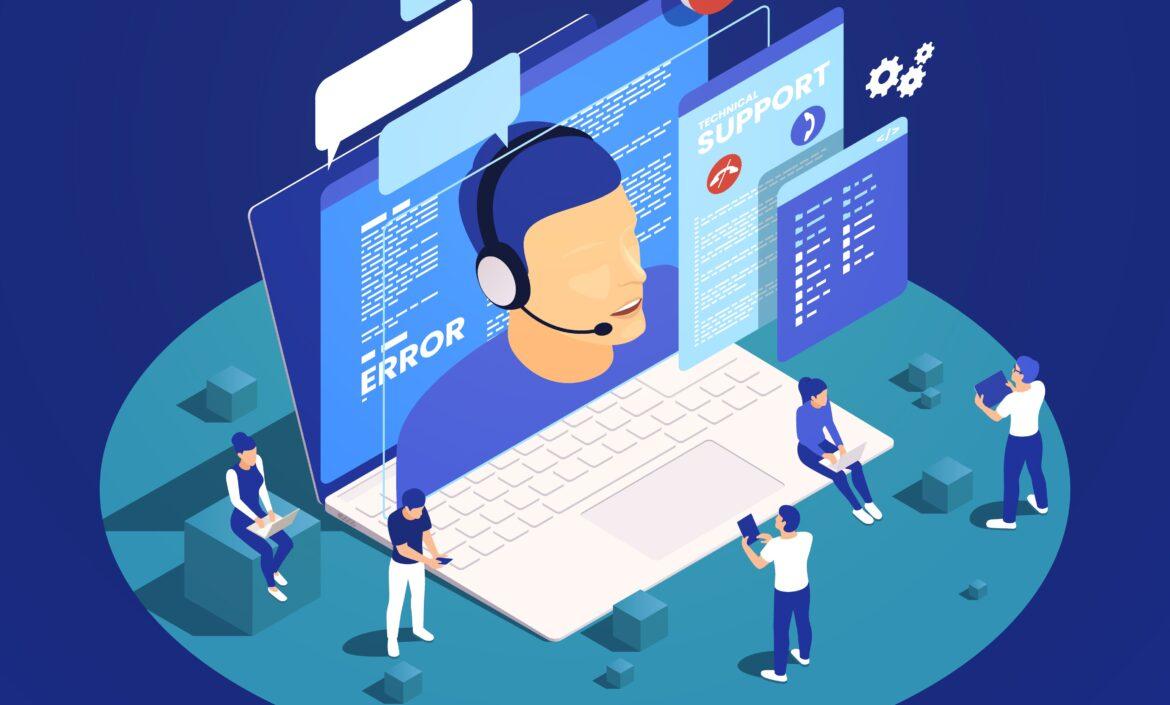Mastering the Art of DevOps Engineering: Strategies for Seamless Collaboration and Continuous Delivery
In recent years, the software development landscape has witnessed a transformative shift with the rise of DevOps. DevOps, a portmanteau of “Development” and “Operations,” represents a cultural and technical approach that fosters collaboration between software developers and IT operations. This methodology aims to break down silos, enhance communication, and streamline the software delivery process.
Defining DevOps
DevOps is not just a set of tools or practices; it’s a cultural philosophy that emphasizes collaboration and communication between software development (Dev) and IT operations (Ops) teams. The primary goal of DevOps is to shorten the software development lifecycle, deliver high-quality software rapidly, and enhance the overall efficiency of the development and deployment processes.
Key principles and practices of DevOps
- Collaboration: DevOps encourages seamless collaboration and communication among development, operations, and other stakeholders. This breaks down traditional silos and promotes a unified approach to software delivery.
- Automation: Automation is a cornerstone of DevOps. By automating repetitive tasks such as testing, deployment, and infrastructure provisioning, teams can accelerate the development process and reduce the likelihood of errors.
- Continuous Integration (CI): CI involves automatically integrating code changes from multiple contributors into a shared repository. This ensures that the codebase is always in a working state, enabling faster and more reliable releases.
- Continuous Delivery/Deployment (CD): Continuous Delivery involves automating the entire software release process, making it ready for deployment at any time. Continuous Deployment takes it a step further by automatically deploying every code change that passes the automated tests.
- Monitoring and Feedback: DevOps emphasizes continuous monitoring of applications and infrastructure. Feedback loops provide valuable insights into system performance, user behavior, and potential issues, allowing for rapid adjustments and improvements.
The Rise of DevOps in Recent Years:
The adoption of DevOps has seen a meteoric rise in recent years, driven by several factors:
- Need for Speed and Agility: In a fast-paced digital era, businesses are under constant pressure to deliver software quickly and respond swiftly to market demands. DevOps, with its focus on automation and collaboration, enables organizations to achieve agility and speed in software development and deployment.
- Cloud Computing: The proliferation of cloud computing has provided a scalable and flexible infrastructure that aligns seamlessly with DevOps practices. Cloud services offer the resources needed for continuous integration, testing, and deployment without the constraints of traditional on-premises environments.
- Improved Collaboration: DevOps breaks down the traditional barriers between development and operations teams. The collaborative nature of DevOps fosters a culture of shared responsibility, where both teams work together to achieve common goals, resulting in faster and more reliable software delivery.
- Increased Complexity of Systems: Modern software systems are becoming more complex, with intricate architectures and dependencies. DevOps practices address this complexity by providing tools and methodologies to manage and automate the deployment of complex systems.
- Focus on Continuous Improvement: DevOps promotes a culture of continuous improvement. Through regular feedback loops, monitoring, and retrospectives, teams can identify bottlenecks, optimize processes, and enhance overall system performance over time.
- Enhanced Reliability and Quality: Automation in testing, deployment, and infrastructure provisioning leads to increased reliability and consistent software quality. DevOps practices reduce the likelihood of manual errors and enable teams to release high-quality software with confidence.
- Cultural Shift in Organizations: The success of DevOps relies on a cultural shift within organizations. As more businesses recognize the importance of collaboration, communication, and automation, they are embracing DevOps principles to stay competitive in the rapidly evolving technology landscape.
DevOps represents a paradigm shift in the way software development and IT operations collaborate to deliver value to businesses and end-users. Its principles of collaboration, automation, and continuous improvement have propelled it to the forefront of modern software development practices. As organizations continue to prioritize speed, agility, and reliability, the adoption of DevOps is expected to grow, reshaping the software development landscape and driving innovation across industries. Embracing DevOps is not just a trend; it’s a strategic imperative for organizations aiming to thrive in the dynamic and competitive world of technology. Below are different strategies to reap its benefits:
Strategies for Seamless Collaboration and Continuous Delivery in Software Development
In the dynamic landscape of modern software development, achieving seamless collaboration and continuous delivery is crucial for staying competitive and meeting the ever-evolving needs of users. This article explores strategies that organizations can employ to foster collaboration among teams and implement continuous delivery practices, ensuring a streamlined and efficient software development process.
- Establish a Collaborative Culture:
The foundation of seamless collaboration is a culture that values openness, communication, and shared goals. Encourage a collaborative mindset among development, operations, and other relevant teams. Foster an environment where team members feel comfortable sharing ideas, feedback, and concerns. Emphasize the importance of working towards common objectives to break down silos and promote cross-functional collaboration.
- Implement Agile Methodologies:
Agile methodologies, such as Scrum or Kanban, provide a structured framework for iterative development and close collaboration. Agile promotes frequent communication, adaptability to change, and the delivery of incremental, value-driven updates. By embracing Agile principles, teams can enhance collaboration, respond swiftly to user feedback, and deliver software in smaller, manageable increments.
- DevOps Practices for Collaboration:
DevOps, combining development and operations, emphasizes collaboration and automation throughout the software development lifecycle. Adopt DevOps practices, including continuous integration, continuous delivery/deployment (CI/CD), and automated testing. These practices break down traditional barriers, streamline communication, and ensure a smooth and rapid delivery pipeline.
- Cross-Functional Teams:
Organize teams to be cross-functional, bringing together individuals with diverse skills and expertise. A cross-functional team is better equipped to handle end-to-end responsibilities, fostering collaboration and reducing dependencies on other teams. This structure accelerates decision-making and promotes a shared sense of ownership over the entire development process.
- Effective Communication Channels:
Establish clear and efficient communication channels within and between teams. Leverage collaboration tools, such as messaging platforms, project management software, and video conferencing tools. Ensure that communication is transparent, timely, and accessible to all team members, regardless of their physical location.
- Automate Routine Tasks:
Automation is a key enabler for continuous delivery. Identify and automate repetitive and time-consuming tasks, such as code integration, testing, and deployment. Automation not only accelerates the development process but also reduces the likelihood of errors, allowing teams to focus on more complex and value-driven activities.
- Continuous Integration (CI):
Implement CI practices to ensure that code changes are automatically integrated into a shared repository. This approach helps identify and address integration issues early in the development process, preventing the accumulation of defects and facilitating a more streamlined and collaborative workflow.
- Continuous Delivery/Deployment (CD):
Extend the benefits of CI by adopting continuous delivery or deployment practices. Automate the process of making software releases ready for deployment, ensuring that code changes are consistently and reliably delivered to production. This minimizes manual interventions, accelerates release cycles, and enhances collaboration between development and operations teams.
- Real-time Monitoring and Feedback:
Implement robust monitoring solutions to provide real-time insights into application performance, user behavior, and system health. Continuous monitoring facilitates quick identification of issues, allowing teams to proactively address potential problems and gather valuable feedback for further improvements.
- Feedback Loops and Retrospectives:
Establish feedback loops at various stages of the development process. Conduct regular retrospectives to reflect on past experiences, celebrate successes, and identify areas for improvement. Act on the feedback received from team members, users, and stakeholders to continuously refine and optimize collaboration and delivery practices.
- Prioritize User Feedback:
Prioritize user feedback as a guiding force in the development process. Engage with users through feedback mechanisms, user testing, and beta releases. Incorporate user insights to refine features, enhance usability, and ensure that the delivered software aligns closely with user expectations.
Seamless collaboration and continuous delivery are not just methodologies; they represent a cultural and operational shift in the way software is developed and delivered. By fostering a collaborative culture, embracing Agile and DevOps practices, and leveraging automation and feedback loops, organizations can streamline their development processes. These strategies empower teams to deliver high-quality software consistently, respond swiftly to changing requirements, and ultimately meet the dynamic demands of the modern software development landscape.












